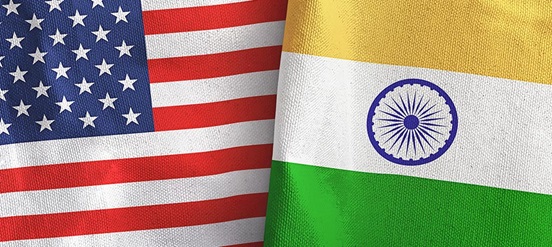
India US Relations
Indo-US Bilateral Ties , Strategic Partnership, Trade, Military Ties
India US relations refer to the bilateral ties between the world’s oldest democracy, the United States, and the world’s largest democracy, India. The relationship between these two nations has evolved over the years, from the initial hesitation and mistrust during the Cold War era to the current era of strategic partnership and cooperation.
The relationship between India and the US is of great importance, given their economic and military clout, their shared democratic values, and their significant influence in shaping regional and global issues. India’s rising stature as a regional and global power, along with the US’s strategic pivot towards the Indo-Pacific region, has made the relationship all the more significant in recent times.

The purpose of studying India-US relations is to gain a deeper understanding of the complexities and nuances of this bilateral relationship, its historical evolution, current dynamics, challenges, and opportunities.
This article aims to provide an overview of India-US relations, focusing on key areas of cooperation such as strategic partnership, bilateral trade, people-to-people ties, and regional and global issues. Additionally, it will examine the challenges and opportunities that lie ahead for both nations, and the implications for policymakers.
Overview Of Indo-US Relations
India-US relations have a long and complex history, spanning over six decades. The relationship between these two nations has evolved from mistrust and suspicion during the Cold War era to strategic partnership and cooperation in the post-Cold War era.
During the Cold War, India pursued a policy of non-alignment and maintained close ties with the Soviet Union, while the US was a staunch ally of Pakistan. The mistrust between India and the US reached its peak during the 1971 Indo-Pak War, when the US sided with Pakistan, despite the latter’s aggression against India. This led to a further deterioration of India-US relations.
However, the end of the Cold War and the rise of India as a regional and global power paved the way for a new era of cooperation between the two nations. In 1998, India conducted nuclear tests, which resulted in sanctions by the US. However, the two countries started a process of rapprochement in the early 2000s, with the US recognizing India as a major player in the region and seeking closer ties with the country.

In 2005, the US and India signed a landmark civil nuclear deal, which paved the way for increased cooperation in the areas of defense, trade, and technology. Since then, the relationship between the two nations has grown significantly, with both countries becoming strategic partners and working together on various regional and global issues.
Today, India-US relations are marked by close cooperation in areas such as counterterrorism, defense, trade, and energy. Despite some challenges, the relationship between the two nations has come a long way and continues to evolve in new and exciting ways.
Indo-US Relations - Partnership, Trade
Significance Of India-US Relations
India-US relations are of great significance to both countries, as well as to the region and the world. The India-US relationship is important for promoting regional and global stability, advancing shared values, promoting economic growth and development, and fostering people-to-people ties. As such, it is a critical relationship that is expected to continue to evolve and grow in the coming years.
The following are some of the key reasons why this bilateral relationship is important:
1. Strategic Partnership
India and the US share a strategic partnership that is based on their shared values of democracy, freedom, and the rule of law. This partnership helps to advance the interests of both countries in the region and the world, and enables them to work together on a range of issues, including defense, security, counter-terrorism, and economic development.
2. Economic Ties
The economic relationship between India and the US is crucial for both countries. India is one of the fastest-growing economies in the world and presents enormous opportunities for US businesses to invest and trade. The US is also a major source of investment and technology for India, which helps to promote economic growth and job creation in both countries.
3. Security And Defense Cooperation
India and the US have significant security and defense ties, which are important for maintaining peace and stability in the region. The two countries have worked together on a range of security issues, including counterterrorism, maritime security, and military-to-military cooperation.
4. Regional And Global Issues
India and the US are key players in the region and the world, and their cooperation is important for addressing a range of regional and global issues. These include the rise of China, the stability of Afghanistan and South Asia, climate change, and energy security.
5. People-to-People Ties
The people-to-people ties between India and the US are an important aspect of the bilateral relationship. There is a large and vibrant Indian diaspora in the US, which helps to strengthen cultural and educational ties between the two countries.
Indian students make up one of the largest groups of international students in the US, with over 200,000 studying in American universities in 2020. Additionally, many American students and scholars travel to India for research, study, and cultural exchange.
Other Significant Dimensions Of India-US Relations
India US relations are multidimensional. India-US strategic partnership refers to the deepening of cooperation and collaboration between India and the United States across a range of areas such as defense, trade, energy, technology, and security. The partnership between the two countries has seen significant growth in recent years, driven by shared democratic values, economic interests, and security concerns.
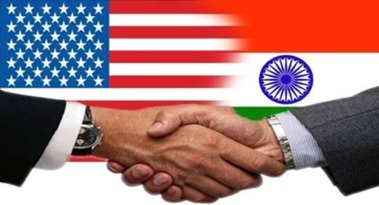
India-US strategic relations are based on a shared vision of a stable, peaceful, and prosperous world order, rooted in democratic values and the rule of law.
The two countries have been working to deepen their cooperation in areas such as defense and security, economic cooperation, regional stability, democracy and human rights, and climate change, with a view to addressing shared challenges and promoting shared interests.
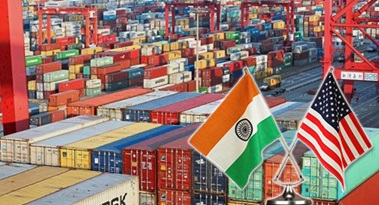
India US Economic And Trade Partnership
The US is India’s second-largest trading partner, with bilateral trade totalling over $90 billion in 2021. The two countries have been working to increase trade and investment, with a particular focus on technology and innovation.
In 2020, the US and India launched the US-India Strategic Energy Partnership to promote energy security and clean energy technologies. US companies are also working in India under “Make In India” program.
Learn More

India US Defence Deals have deepened their security and defense cooperation in recent years, driven by shared strategic interests and concerns about regional security challenges.
The US is one of India’s largest defense suppliers, with bilateral defense trade expected to reach $20 billion by 2025. India has purchased a range of defense equipment from the US, including transport aircraft, helicopters, and missile defense systems.

The India-US Civil Nuclear Agreement, also known as the 123 Agreement, is a landmark bilateral nuclear agreement signed between India and the United States in 2008. The deal aimed to strengthen the strategic partnership between the two countries and promote peaceful nuclear cooperation.
Under the agreement, the US agreed to provide India with access to civilian nuclear technology, equipment, and materials which were previously restricted.
Historical Overview of India-US Relations
India-US relations have a complex and rich history that spans over six decades. The relationship between the two countries has gone through several phases, marked by moments of tension and mistrust, as well as periods of cooperation and partnership.
the relationship between India and the US has gone through several phases, marked by moments of tension and mistrust, as well as periods of cooperation and partnership. Despite the challenges, the relationship has come a long way and is expected to continue to evolve in the coming years.
1. The Early Years (1947-1962)
The early years of India-US relations were marked by a cautious approach and a lack of substantive engagement. India had just gained independence from British rule in 1947, and the US was preoccupied with the Cold War. The two countries did not establish diplomatic relations until 1949, and the relationship remained cool until the early 1950s.
However, India’s non-aligned foreign policy, which sought to maintain a balance between the two superpowers, put it at odds with the US, which was actively seeking allies against the Soviet Union.
2. The Kennedy Years (1961-1963)
The relationship between India and the US began to improve during the presidency of John F. Kennedy. Kennedy was interested in promoting democracy and economic development in developing countries, and he saw India as an important partner in this effort. The US provided economic assistance to India and supported its efforts to modernize its economy.
3. The Johnson Years (1963-1969)
The relationship between India and the US reached a low point during the presidency of Lyndon B. Johnson. The US supported Pakistan during the 1965 Indo-Pak War, which led to a rupture in India-US relations. India became increasingly skeptical of US intentions and turned to the Soviet Union for support.
4. The Nixon Years (1969-1974)
The relationship between India and the US improved during the presidency of Richard Nixon. Nixon saw India as an important player in Asia and sought to balance US relations with both India and Pakistan. However, the US’s tilt towards Pakistan during the 1971 Indo-Pak War led to a further deterioration in India-US relations.
5. The Reagan Years (1981-1989)
The relationship between India and the US improved during the presidency of Ronald Reagan. India’s economic liberalization in the 1980s and the end of the Cold War paved the way for a new era of cooperation between the two countries. However, India’s nuclear tests in 1998 strained the relationship once again.
6. The Post-Cold War Era (1991-2000)
The end of the Cold War and the rise of India as a regional and global power paved the way for a new era of cooperation between India and the US. The US recognized India as a major player in the region and sought closer ties with the country. The two countries signed several agreements on defense, trade, and technology during this period.
7. The 21st Century (2001-present)
The relationship between India and the US has grown significantly in the 21st century. The two countries signed a landmark civil nuclear deal in 2005, which paved the way for increased cooperation in the areas of defense, trade, and technology.
India has also become a major defense partner of the US, with the two countries engaging in joint military exercises and collaborating on defense projects.
Indo-US Nuclear Deal
India US Historic Civil Nuclear Agreement 2008

One of the most significant developments in US-India relations during the Bush administration was the signing of the US-India Civil Nuclear Agreement in 2008. This agreement allowed India to import nuclear technology and fuel from the United States, despite not being a signatory to the Nuclear Non-Proliferation Treaty.
Pre-independence Era India US Relations
India-US relations during the pre-independence era were characterized by limited contact and engagement, as India was a British colony until 1947. However, there were some important developments during this period that set the foundation for future relations between the two countries.
India-US relations during the pre-independence era were limited, but there were some important developments that set the foundation for future relations between the two countries. The American missionary presence in India, Mahatma Gandhi’s visit to the US, India’s role in World War II, and US support for Indian independence all helped to establish a positive image of the US in India and set the stage for closer ties in the post-independence era.
1. American Missionaries
American Christian missionaries were among the first Americans to establish a presence in India in the early 19th century. They played an important role in education, healthcare, and social reform, and their efforts helped to establish a positive image of Americans in India.
2. Mahatma Gandhi Visit To US
Mahatma Gandhi’s visit to the US in 1930 helped to raise awareness of the Indian independence movement in the US. Gandhi met with several prominent Americans, including President Herbert Hoover, and his nonviolent philosophy of resistance had a significant impact on American civil rights leaders like Martin Luther King Jr.
3. India's Role In World War II
India’s role in World War II was also a significant factor in India-US relations. India was a British colony during the war, and the US supported Britain’s war efforts. However, India’s contributions to the war effort, as well as the Indian National Army’s support of the Axis powers, helped to raise awareness of India in the US.

4. US Support For Indian Independence
The US played an important role in supporting India’s independence movement. The US supported India’s demand for self-rule at the United Nations and helped to create the conditions for the transfer of power from the British to the Indians in 1947.
The United States provided diplomatic and moral support for Indian independence from British colonial rule in the mid-twentieth century. The US government expressed its support for Indian self-determination as early as the 1920s, with US President Woodrow Wilson declaring in 1919 that “the right of self-determination is a basic principle of the League of Nations.”
During World War II, the US government provided significant military and economic aid to India, which was then under British colonial rule, to support the war effort against Japan. The US also dispatched a number of high-level envoys to India, including President Franklin D. Roosevelt’s emissary, Henry Morgenthau Jr., who met with Indian leaders to discuss the future of the country.
Indian Top Leadership During Freedom Struggle 1947

After the war, the US government continued to express its support for Indian independence and encouraged the British government to grant independence to India. US officials played a key role in negotiations leading up to the Partition of India and the establishment of India and Pakistan as separate states in 1947.
In addition to diplomatic and political support, American civil society played an important role in advocating for Indian independence. Prominent figures such as Martin Luther King Jr. and Eleanor Roosevelt publicly expressed their support for Indian self-determination, and American civil rights activists drew inspiration from the Indian independence movement in their own struggles for equality.
The US played an important role in supporting Indian independence from colonial rule, and the close ties between the two countries have continued to evolve and deepen in the decades since.
Post-independence Era India US Relations
Post-independence era India-US relations have been marked by a complex mix of cooperation and tension, shaped by a range of geopolitical and economic factors.
Post-independence era India-US relations have been shaped by a range of geopolitical and economic factors and have gone through several phases of cooperation and tension. While there have been challenges along the way, the two countries have managed to build a strategic partnership based on shared democratic values and geopolitical interests.
Here are some key developments in the relationship:
1. Early Years (1947-1962)
In the immediate aftermath of India’s independence, India’s non-aligned foreign policy put it at odds with the US, which was actively seeking allies against the Soviet Union. India established diplomatic relations with the US in 1949, but the relationship remained cool until the early 1950s. However, India’s participation in the Korean War (1950-53) as part of a UN force and its support for the US in the Suez Crisis (1956) helped to improve relations.
2. Alliance with Soviet Union (1962-1979)
India’s alliance with the Soviet Union during the Cold War marked a low point in India-US relations. The US viewed India as a Soviet ally and was critical of India’s nuclear program. The 1971 India-Pakistan War further strained the relationship, as the US tilted towards Pakistan.
3. Slow Thaw (1979-1991)
The election of Prime Minister Indira Gandhi in 1979 marked a turning point in India-US relations. The US saw India as a potential counterweight to Soviet influence in the region and sought to improve relations. The two countries signed a Memorandum of Understanding on Bilateral Cooperation in the Field of Science and Technology in 1983, which paved the way for closer cooperation.
Indian PM Indira Gandhi's US Visit 1983

4. India's Economic Reforms (1991-2000)
India’s economic liberalization in 1991 opened up new opportunities for India-US cooperation. The US saw India’s growing economy as an important market and a potential partner in global affairs. In 1998, the two countries signed the US-India Economic Dialogue, which aimed to promote trade and investment.
The post-1991 era was characterized by a shift towards market-oriented reforms, liberalization, and globalization. The government introduced various measures to reduce the state’s role in the economy and promote private enterprise. These measures included reducing trade barriers, deregulating industries, privatization of state-owned enterprises, and opening up to foreign investment.
Ex Indian PM Narsimha Rao , Architect Of Economic Reforms
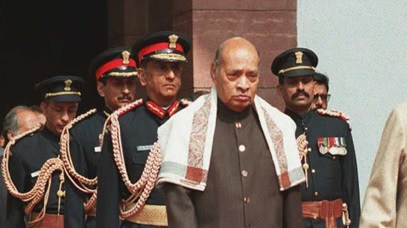
India’s economic reform post-independence can be divided into two phases: the pre-1991 era and the post-1991 era.
In the pre-1991 era, India followed a mixed economy model with a significant role for the state in economic development. The government’s policies focused on import substitution industrialization (ISI), which aimed to develop domestic industries and reduce dependence on imports. The government also implemented various socialistic measures such as nationalization of industries, state control of the economy, and heavy regulation.
5. Strategic Partnership (2000-present)
The India-US strategic partnership is a critical alliance in today’s world, with wide-ranging significance in political, economic, and security domains.
the India-US strategic partnership has the potential to contribute significantly to regional and global stability, security, and prosperity.

India and the US share a common interest in combating global terrorism. Both countries have been victims of terrorist attacks, and their partnership in this area can lead to the sharing of intelligence and military cooperation to prevent future attacks.
The strategic partnership can also be seen as a response to China’s growing influence in the region. Both India and the US are concerned about China’s military expansion, its economic policies, and its assertiveness in the South China Sea. The partnership can help counterbalance China’s influence and promote stability in the region.
India US Relations Current Era
The current era of India-US relations is marked by a strategic partnership that encompasses a broad range of areas, including defense, security, trade, energy, and technology.
the current era of India-US relations is marked by a strategic partnership that encompasses a broad range of areas, including defense, security, trade, energy, and technology. The two countries have been working together to deepen their cooperation and strengthen ties, with a particular focus on regional stability and combating shared challenges such as the COVID-19 pandemic.
1. Defense and Security
The US and India have been working to deepen their defense and security cooperation in recent years. The two countries have signed a number of agreements related to defense technology, including the Logistics Exchange Memorandum of Agreement (LEMOA) in 2016, which allows for easier sharing of military logistics, and the Communications Compatibility and Security Agreement (COMCASA) in 2018, which allows for secure communication between the two countries’ armed forces.
2. Trade And Investment
The US is India’s second-largest trading partner, with bilateral trade totaling over $90 billion in 2021. The two countries have been working to increase trade and investment, with a particular focus on technology and innovation. In 2020, the US and India launched the US-India Strategic Energy Partnership to promote energy security and clean energy technologies.
3. Technology And Innovation
The US and India have been working to deepen their cooperation in the technology and innovation sectors. The two countries have established several initiatives, including the US-India Science and Technology Endowment Fund, which supports joint research and development projects, and the Global Innovation and Technology Alliance, which aims to promote technology transfer and commercialization.
India US Pact On Semiconductor Supply Chain
In October 2021, India and the United States signed a memorandum of understanding (MoU) to strengthen the semiconductor supply chain. The MoU was signed during Indian Prime Minister Narendra Modi’s visit to the United States, and it aimed to address the global shortage of semiconductors, which has affected a range of industries, including automobiles and electronics.
The MoU outlines a number of areas for cooperation between India and the United States, including research and development, workforce training, and supply chain security. The two countries also agreed to establish a joint working group on semiconductors to identify areas for collaboration and coordinate their efforts.
The agreement is significant because semiconductors are a critical component of modern electronics, and their shortage has had a major impact on global supply chains. By working together, India and the United States hope to address this shortage and strengthen their semiconductor industries.
4. Regional Cooperation
The US and India have been working to promote regional stability and cooperation, particularly in the Indo-Pacific region. The two countries have participated in joint military exercises and have worked to strengthen ties with other countries in the region, such as Japan and Australia.

India and the United States have been cooperating on security issues in the Indo-Pacific region, including maritime security, counterterrorism, and cybersecurity. The two countries have also conducted joint military exercises, such as the Malabar naval exercise.
India and the United States have been cooperating on energy issues, particularly in the areas of clean energy and energy security. The two countries have established a number of initiatives and partnerships in this area, including the US-India Strategic Energy Partnership.
India US Two Plus Two Dialogue
The India-US Two Plus Two Dialogue is a high-level strategic dialogue mechanism between India and the United States. The dialogue involves the foreign and defense ministers of both countries, who discuss a wide range of issues related to bilateral, regional, and global security and defense cooperation.
The first India-US Two Plus Two Dialogue was held in New Delhi in September 2018, where both countries discussed ways to enhance their strategic partnership, particularly in the areas of defense, security, and economic ties.
The second round of the dialogue was held in Washington D.C. in December 2019, where both countries discussed key issues such as counter-terrorism cooperation, maritime security, and defense technology cooperation.
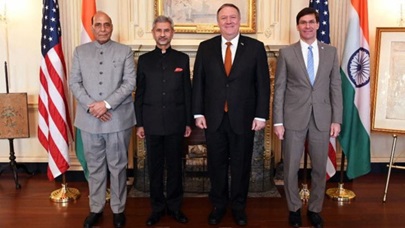
The third round of the India-US Two Plus Two Dialogue was held virtually in October 2020 due to the COVID-19 pandemic. During the dialogue, the two sides discussed ways to strengthen their strategic partnership in areas such as defense, counter-terrorism, and trade and investment.
The fourth round of the dialogue was held in Washington D.C. in October 2021, where both countries discussed a wide range of issues such as the situation in Afghanistan, defense cooperation, technology and innovation, and regional security.
Overall, the India-US Two Plus Two Dialogue is an important mechanism for enhancing strategic coordination and cooperation between India and the United States, which have emerged as key partners in promoting regional and global stability and security.
India US Relations under PM Narendra Modi's BJP Government
Era 2014 Onwards
The relationship between India and the United States has undergone a significant transformation since the BJP government, led by Prime Minister Narendra Modi, came to power in 2014.
The relationship between India and the US has grown significantly stronger under the BJP government led by Prime Minister Narendra Modi. Both countries share a strong commitment to democracy, economic growth, regional security, and addressing global challenges, and this has driven their deepening partnership.
Here are some of the key developments and trends:

1. Enhanced Strategic Partnership
The two countries have deepened their strategic partnership, with regular high-level visits, increased military cooperation, and joint military exercises. The US has also designated India as a major defense partner, allowing for greater technology transfer and defense collaboration.
2. Economic Ties
The US is one of India’s largest trading partners, and the two countries have been working to boost economic ties, with a focus on increasing trade and investment. In 2021, the US and India signed a new framework agreement to enhance economic cooperation, including in areas such as energy, infrastructure, and digital technologies.
3. Regional Security
India and the US have worked closely on regional security issues, including in the Indo-Pacific region, where both countries have been working to promote a free and open Indo-Pacific. The US has also supported India’s efforts to counter terrorism, including by designating several Pakistan-based terror groups as global terrorists.
4. Climate Change
India and the US have been cooperating on climate change, with India being a key partner in the US-led International Solar Alliance. In 2021, the two countries launched a new Climate and Clean Energy Agenda 2030 Partnership to advance clean energy and climate goals.
5. People-to-People Ties
The US and India have strong people-to-people ties, with over 4 million Indian Americans living in the US. The two countries have been working to enhance cultural and educational exchanges, including through the Fulbright-Nehru program and the US-India Higher Education Dialogue.

